Key Findings
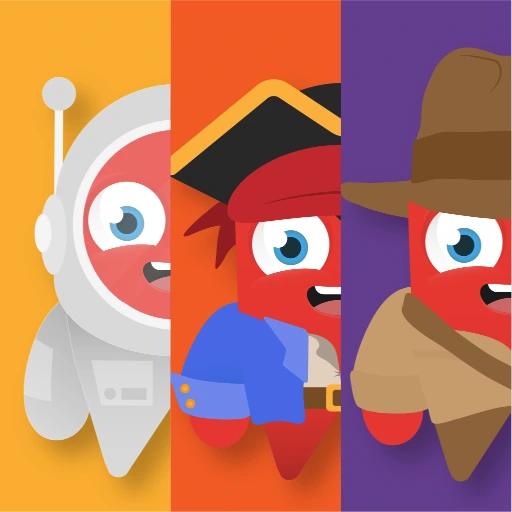
How Children Learn
There are 3 key foundations that are seen as critical to ensuring optimal learning for young children; promoting active learning, promoting social collaboration, and utilising meaningful tasks and experiences in the learning process. Active learning is seen as critical in ensuring children develop to be determined and resilient, improving the quality and quantity of knowledge they absorb. There are two main methods of motivation that promote active learning: extrinsic motivation and intrinsic motivation. Extrinsic motivation is driven by positive rewards such as praise whereas intrinsic motivation comes from within, where children participate in activities because they are fun. Intrinsically motivated learners are ideal as they recognise the relationship between effort and success. Research suggests that to attain intrinsic motivation It is important for students to not be grouped solely based on ability as this gives the impression that ability is rewarded over effort, it is also important for students to value collaboration over competition.
Regarding learning methodology, studies have shown that the use of authentic or novel materials and assessments, where students are given responsibility for their own learning with opportunity to reflect upon their experiences are crucial elements of teaching frameworks that promote active learning, known as constructivism. Furthermore, it is also important that the learning material can be delivered and processed in a way that promotes both inter-student collaboration and the construction of bridges between old and new knowledge through the contextualisation and real world definition of said materials.
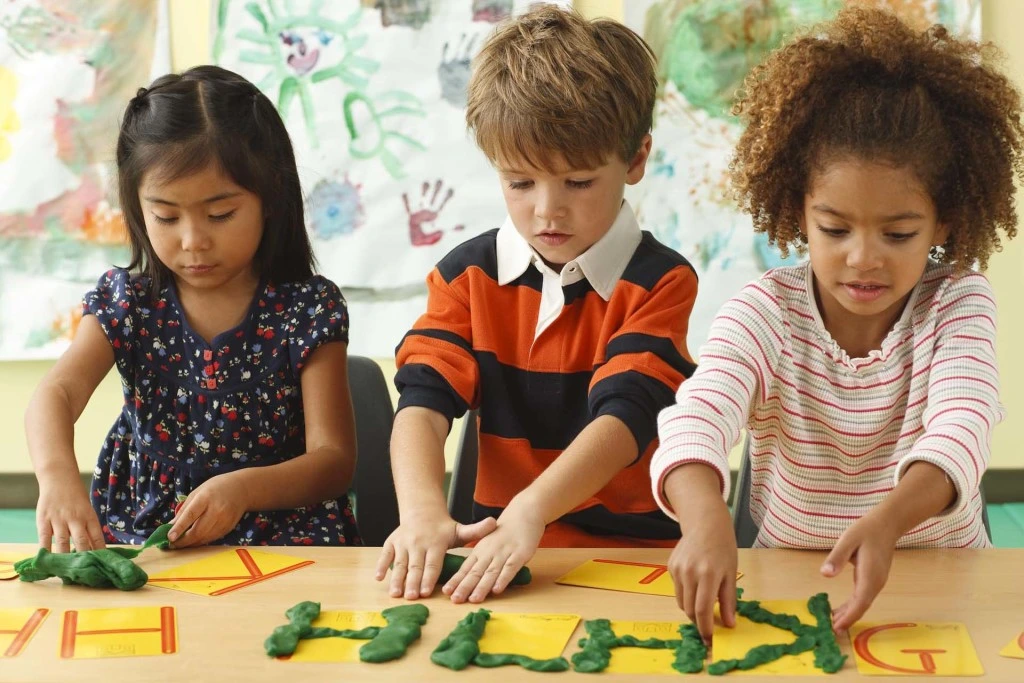
Children learn best when they collaborate and possess the intrinsic motivation to learn
The promotion and establishment of collaboration between students facilitates greater learning through a multitude of vices. If students foster a collaborative culture, they can help each other learn more by creating critical conversations about material to enhance their collective understanding and develop a sense of pride and duty to their learning community and tertiarily their studies. Further to the pride they develop in their community, the notion that their work might be available for their peers to view creates more pressure to focus on enhancing the quality of said work. Simultaneously, promoting healthy collaboration is likely to boost student spirits and hence enhance both their engagement and commitment to their work. With regards to promoting healthy collaboration, it was found in the project that there was a direct positive correlation between showing children how to collaborate successfully and why it is important (providing a framework instead of explicitly forcing them to collaborate), and learning outcomes. This has broader implications for products within the educational space, particularly interactive games/competitions, as encouraging and guiding children by allowing them to see how their work has positively contributed to a shared goal (e.g. the schools ranking in a competition), as opposed to merely forcing them to work together, stands to significantly improve their learning outcomes.
Authenticity, namely the conduct of meaningful tasks and utilisation of meaningful materials, is seen as the last critical foundation to learning. The ability to relate learned knowledge to pre-existing neural pathways is enhanced through the ability to connect knowledge to real situations and see how it coincides with one’s pre-existing paradigms of reality. To this end, creating authentic and relatable learning experiences may differ across students, for example different cultural backgrounds and experiences may require different contextualisation to maximise new knowledge creation and retainment on an individual basis. Tertiarily, meaningful tasks help to improve student engagement in subject areas where they may otherwise be disinterested by associating them with more interesting topics, such as mathematics. This has implications for the learning experience ED Tech providers can offer, by designing products to be relatable to real world situations and events, they stand to enhance student engagement whilst helping associate new knowledge to pre-existing neural constructs the student has developed.
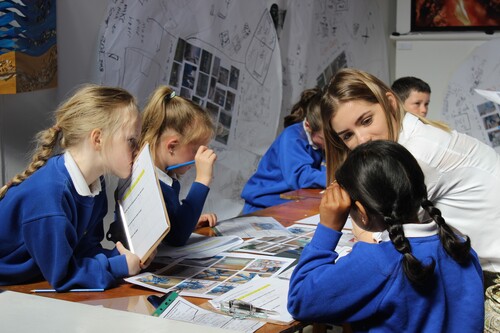
Context and authenticity provide the best foundations for maximised learning
Educational technology tools, or Ed Tech, is increasingly used alongside more traditional teaching methods to enhance the learning experience for students. Specifically, Ed Tech with its vast range of uses and access to large amounts of information on the internet, can make the role of teaching easier, and make students better informed. Take for example the case of Espresso, a web-based literacy learning package for schools including multimedia format lesson plans and work sheets for pupils. Watts and Lloyd conducted a study on the impact of Espresso on students, finding that the tools encouraged collaboration through interaction, whilst the authentic and meaningful material also inspired greater engagement from participants. Moreover, the additional features such as lessons that could be replayed provided additional learning opportunities that traditional methods couldn’t. So much so, that some students valued the insights of the software over teachers’ insights, seeing teachers as more of a guide and the software as the primary provider of new knowledge. The case of Espresso demonstrates how Ed Tech can be used to boost collaboration and hence enhance the learning experience through its interactive nature whilst also delivering meaningful and authentic material by providing up-to-date and relatable topics, promoting greater engagement. However, this case also shows why it is important to manage Ed Tech correctly, as teaching young children to believe multimedia over their ‘guides’ could prove problematic to their healthy development.
With respect to interactive game-based learning, research shows that the repetition-based format many entail can promote enhanced learning. Specifically, because effective continual repetition is important for recall ability and committing new knowledge to long term memory. To this end, interactive game based learning provides the advantage that it removes some of the monotony from repetition, creating a more engaging space for students to undergo this important part of learning. This reinforces the concept that Ed Tech can be used alongside traditional methods to enhance the student experience, with the implication that learning must be engaging for students and cover topics they find interesting to fully realise the software’s potential benefits.
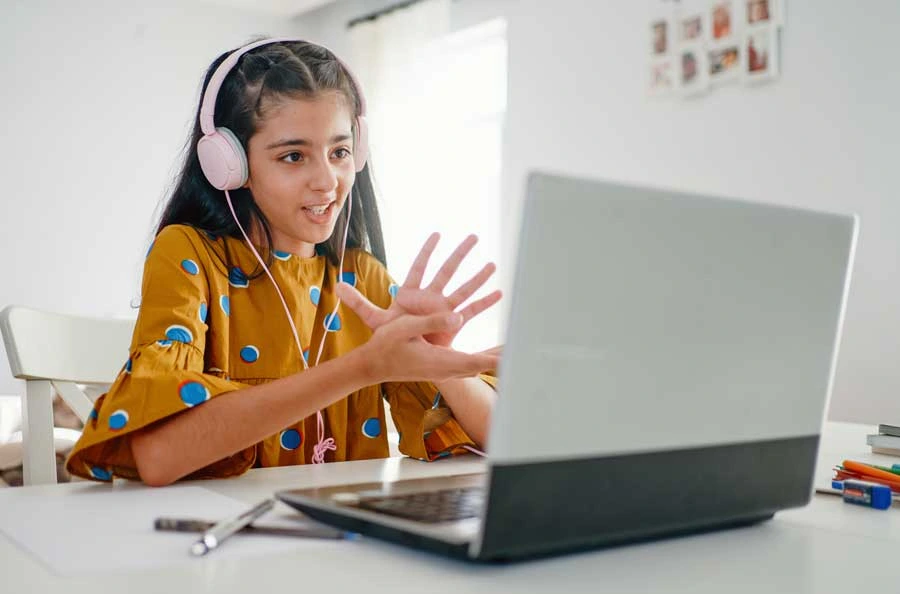
Ed-tech facilitates personalised feedback, greater repetition, and easier exercise repeatability
In the study, 3 competitions (1 spelling bee, 2 maths competitions) were analysed, with student test scores from interactive learning products before, during, and after competitions modelled to ascertain how effective Emile’s competitions were at improving student performance. Across all 3 competitions, a notable improvement in average student performance was observed as the competitions took place compared to before and after, demonstrating that students were making tangible progress as a result of the competitions. The football world cup themed MTC competition saw the highest increase in average student performance (+0.17/25 score improvement day-on-day) out of the two maths competitions (+0.09/25 day-on-day for April MTC). The football world cup themed competition was also found to be more relevant to students than the un-themed April MTC as it was based around one of the three most relatable themes for KS1 & KS2 pupils – Sports (specifically football). This reinforced previous findings that making learning relatable is crucial for children’s academic success, indicating that future competitions should all relate to external events that are relevant to children to maximise engagement.
The spelling bee competition was more complex to analyse due to its structure. All students started in round one and had to answer 10 questions, which if they got at least 8 correct, they could progress to the next round where they again had 3 lives. The difficulty in this is that given the data was recorded as a raw score out of 60 questions (6 rounds), if a student answered 37 correctly for example, they may have got 4*8 correct and only 1 in the last round, or 3*10 and 7 in the fourth round. Therefore, given the questions increased in difficulty each round, it became challenging to discern exactly how much average progress children were making. We decided the best approach was to group students based upon which round they definitely passed (e.g. 8+ is at least round 1 passed, 16+ is at least round 2 passed etc.). We found that there were no clear improvements over time in the first stage of the competition, however the best performing schools were selected for a final stage, in which there was significant improvements over time regarding the average number of students reaching every stage after the first round. Although this may indicate a bias that only the best performing schools/students (those capable of reaching the final stage) saw consistent improvements, there is evidence that performance for at least some participants was positively impacted by the competition. Furthermore, the findings help reinforce the idea that children who are more committed to learning and engage well with the material (passing the first stage) are more likely to see consistent performance improvements, illustrating how engagement and the learning environment help determine the utility of ed-tech as a tool for enhancing performance.
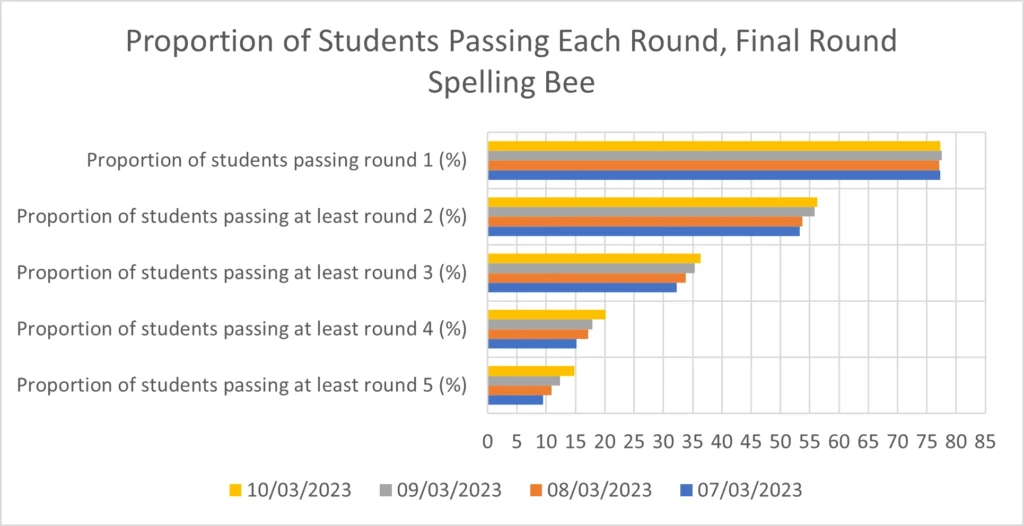
Spelling bee final round performance
